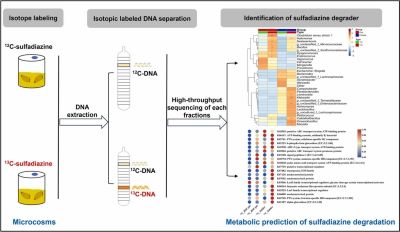
Black Soldier Flies Digest Antibiotics
Or, to be more precise, bacteria associated with black soldier flies do. This could be helpful when using black soldier flies to recycle municipal wastes, which are likely to contain antibiotic residues.
Xia, J., Ge, C. and Yao, H., 2024. Identification of functional microflora underlying the biodegradation of sulfadiazine-contaminated substrates by Hermetia illucens. Journal of Hazardous Materials, 463, 132892. https://doi.org/10.1016/j.jhazmat.2023.132892
The increasing discharge of antibiotic residues into the natural environment, stemming from both human activities and animal farming, has detrimental effects on natural ecosystems and serves as a significant driving force for the spread of antibiotic resistance. Biodegradation is an important method for the elimination of antibiotics from contaminated substrates, but the identifying in situ microbial populations involved in antibiotic degradation is challenging. Here, DNA stable isotope probing (DNA-SIP) was employed to identify active sulfadiazine (SDZ) degrading microbes in the gut of black soldier fly larvae (BSFLs). At an initial SDZ concentration of 100 mg kg−1, the highest degradation efficiency reached 73.99% after 6 days at 28 °C. DNA-SIP revealed the incorporation of 13C6 from labeled SDZ in 9 genera, namely, Clostridum sensu stricto 1, Nesterenkonia, Bacillus, Halomonas, Dysgonomonas, Caldalkalibacillus, Enterococcus, g_unclassified_f_Xanthomonadaceae and g_unclassified_f_Micrococcaceae. Co-occurrence network analysis revealed that a significant positive correlation existed among SDZ degrading microbes in the gut microbiota, e.g., between Clostridium sensu stricto 1 and Nesterenkonia. Significant increases in carbohydrate metabolism, membrane transport and translation were crucial in the biodegradation of SDZ in the BSFL gut. These results elucidate the structure of SDZ-degrading microbial communities in the BSFL gut and in situ degradation mechanisms.
